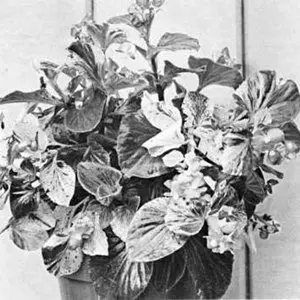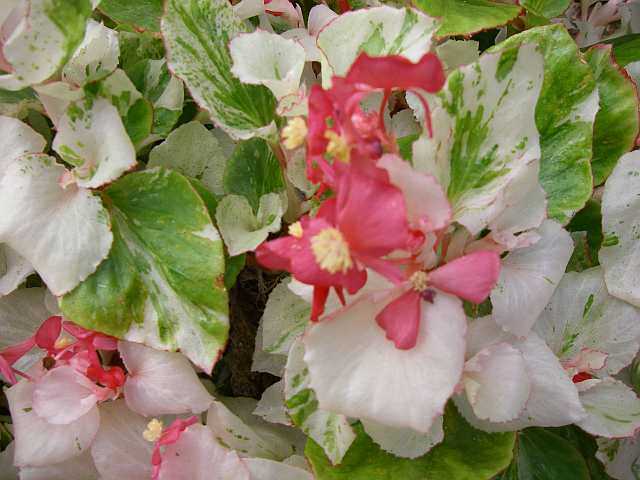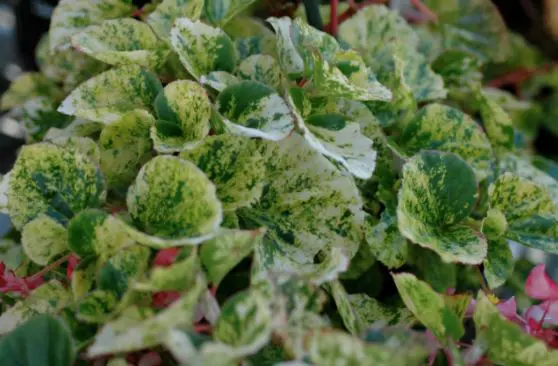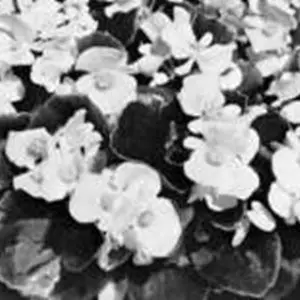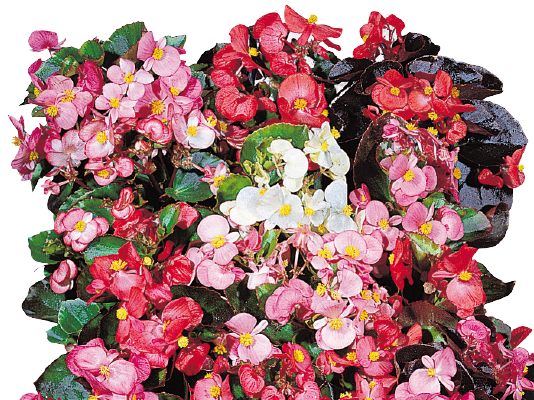The bulk of the plants in the “begonias with semperflorens characteristics” group are probably the most common of all begonias — those compact bedding plants known as “wax begonias” but more properly termed Semperflorens Cultorum. These have been hybridized over the years using as an ancestor the species B. cucullata, once known as B. semperflorens.
There also are other species with similar appearance and many cultivars derived from these species. Another prominent species in this group is B. schmidtiana, a many-branched plant with small, velvety leaves and white to pink flowers almost all year.
Many new varieties grown for bedding use are F1 hybrids and come in different colors. B. ‘Butterfly’, B. ‘Cinderella’, B. ‘Glamour’ series, and others are sold at nurseries. These have large flowers (as wide as 3 inches) and make good pot and hanging basket plants. They have no special soil requirements and will grow in full sun except in hot, dry climates. They also grow in filtered shade. They range in height from 4 to 18 inches, depending on strain.
Other semperflorens-like begonias are grown in containers with standard planting mix containing enough coarse organic material to make the mix porous and fast-draining. These include, in addition to B. schmidtiana, such variegated foliage cultivars as B. ‘Calla Lily’, B. ‘Charm’, and B. ‘Kallaking’; double-flowering types such as B. ‘South Pacific’ and B. ‘Lucy Locket’; crested-flowered cultivars such as B. ‘Thimbleberry’; and the species B. cucullata and B. leptotricha.
All begonias in this group will grow in a wide temperature range, but are at their prime when daytime temperatures are in the 60s. Frequent pinching will provide fuller plants with more bloom. Humidity requirements are not unusual: any level comfortable for people will do.
A fertilizer program should depend on a complete fertilizer (such as 20-30-20) applied every two to three weeks, with a high-phosphorus (0-10-10) formula substituted every third or fourth feeding. Water only when the planting mix feels dry to the touch. In the ground, semperflorens-like begonias are almost drought-tolerant once established.
Except for an occasional whitefly attack, these begonias are resistant to insect infestation. But in high-humidity climates fungus diseases such as powdery mildew have been known to strike. A dose of a karathane fungicide will combat diseases and applications of the systemic fungicide benomyl work as a preventive.
All semperflorens-like begonias are propagated easily from tip cuttings or basal stem cuttings, preferably without bloom. Cuttings must have at least two leaf buds, dormant or active, buried in the planting medium.

